How to get rid of thrips: tips to prevent these houseplant, greenhouse and garden pests
Learn how to get rid of thrips – otherwise known as thunder flies – to protect your plants both indoors and out


Need to know how to get rid of thrips, otherwise known as thunder flies? You've come to the right place. Whether you've already spotted some on your indoor or outdoor plants or just want to get prepared in case of a future infestation, we've got all the tips you need.
If you've already had to learn how to get rid of ants or any other small insect, you'll know that even the tiniest of pests can still be a pain. And thrips, which can damage plants by feeding on the sap, are no exception. 'Thrips are one of the more troublesome, but sadly more common, varieties of houseplant pests,' says the experts behind Baby Bio® – a houseplant food. 'They're very small and slender, making them difficult to spot, they multiply quickly, and can crawl or fly – enabling them to infest your plant collection with ease.'
And, it's not just houseplants that thrips can infest. There are several different varieties and some will attack outdoor flowers, foliage, and crops, as well as plants in your greenhouse. So knowing how to get rid of thrips is definitely worthwhile, to keep your plants in top condition all-around your plot.
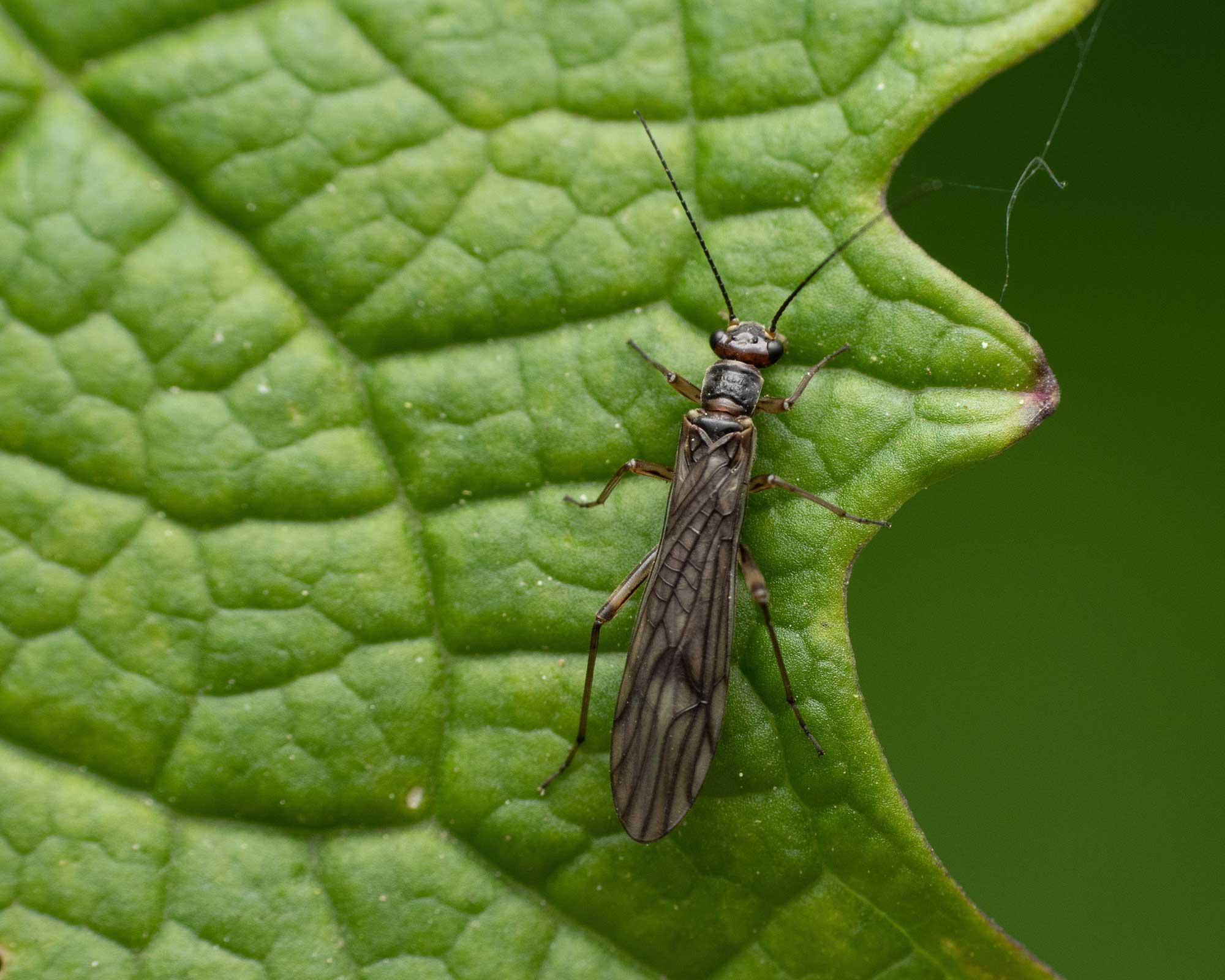
A close-up of a thrip
6 tips on how to get rid of thrips
You can find tips on how to prevent and how to get rid of thrips below. And if you're looking for more pest advice, our guide on how to get rid of aphids might come in handy, too.
1. Check your new plants carefully
Are you planning on purchasing some new leafy additions, perhaps after perusing our guide to the best indoor plants? Be sure to check you're not bringing in thrips accidentally.
'The most common way thrips will find their way into your home is by coming in with new plants, so don't forget to check any new additions you bring home thoroughly for pests,' advises the team at Baby Bio®.
'Leave no leaf unturned when it comes to inspecting new plant babies,' they continue. 'Check the soil, underneath the leaves, the stems – and even consider quarantining your new plant until you're certain it is free from pests.'
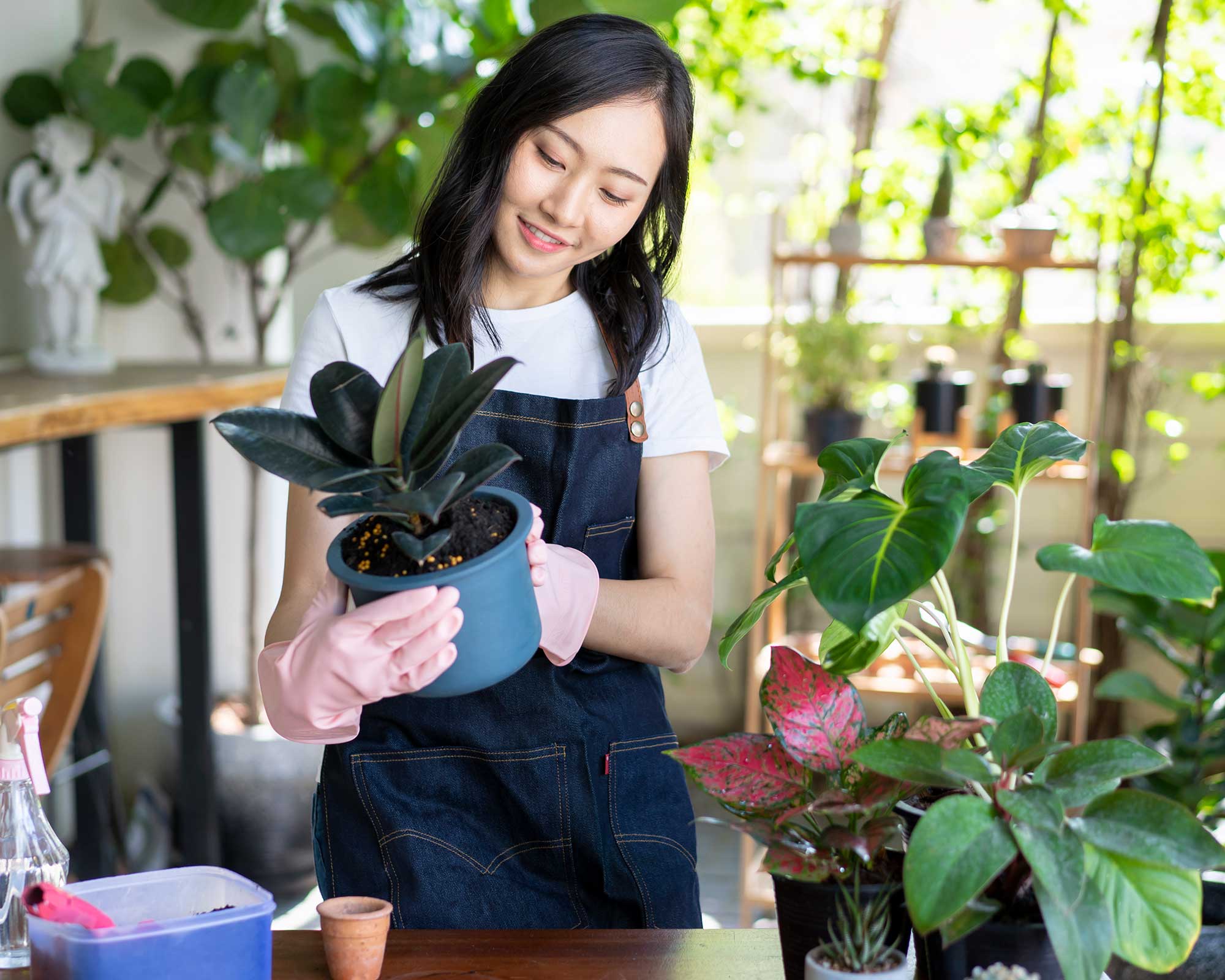
Keep a look out for thrips on new houseplants
2. Keep existing plants in good condition
'You can also take steps to prevent infestations of your existing plants by regularly washing leaves, pruning, and removing dead leaves from settling on the top layer of soil,' says the experts at Baby Bio®.
This houseplant maintenance won't take long but will help keep your plants in top condition as well as ward off pests. If you need a new tool for snipping off old leaves, our best secateurs buying guide will come in useful.
'If you do discover a thrips infestation, the first thing to do is isolate your plant to prevent them from spreading. Move it as far as possible from your other plant babies to protect them,' the team adds.
Looking for more ways to keep your plants looking their best? Our guide on how to get rid of slugs has lots more tips for dealing with these other common pests.

Keep your plants in good condition
3. Try an insecticidal soap
Spotted some thrips on your plant? Insecticidal soap can help wipe them out.
There are lots of commercial ones which can be found in garden centers or online. Or, you can make your own concoction using one teaspoon of mild liquid soap diluted with a liter of water.
Give it a good shake and spray it onto the affected foliage. If you've made a homemade mix, it's best to test it out on a small area of your plant first, to check there are no adverse effects.
This method can be effective against other soft-bodied insects too, and can also be helpful when learning how to get rid of stink bugs.

Insecticidal soap works against lots of different pests, including thrips
4. Hang up sticky traps
'You might also consider setting up sticky yellow traps to help control pests and alert you to the problem early on,' says the team at Baby Bio®. 'Yellow traps which have a blue section specifically attract the thrips.' Hang them directly above your plants.
However, the RHS recommends avoiding this method for controlling an outdoor thrip infestation, as the traps can catch other, non-targeted insects. If it's just indoor pests you're after though, this is an easy approach to try. And it's good for learning how to get rid of fruit flies, too.
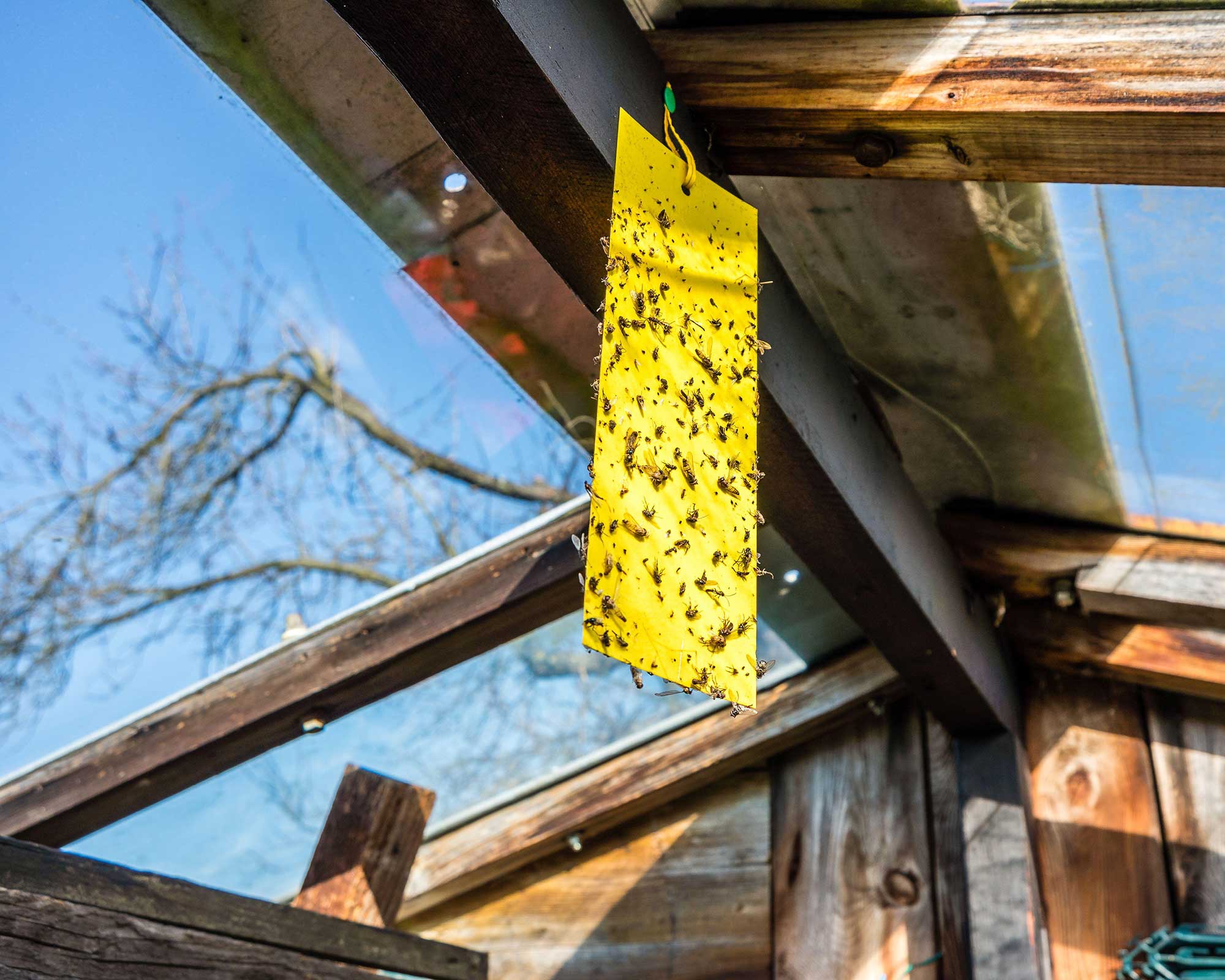
Sticky traps can be hung up in a greenhouse or indoors
5. Use a pesticide spray
If thrips are really getting you down, you might prefer to use a commercial pesticide to resolve the problem. 'Invest in a bug killer that targets a variety of pests including thrips, sawfly, leaf beetles, and aphids,' says the team at Baby Bio®. They suggest using Baby Bio® Houseplant Bug Killer, available on Amazon.
'Spray the plant generously, making sure to cover the leaves and stem from top to bottom, but avoiding soaking any delicate blooms. Repeat this every 10 to 14 days to ensure any hatched eggs are treated, too.' Of course, do double-check the label of your chosen product before application, in case the instructions differ.
'If you are faced with a serious infestation, consider repotting the plant into fresh soil to remove any unhatched eggs and prevent the thrips from relaying,' they continue. Make sure you shake off as much excess soil as possible before placing it into fresh soil, then repeat the treatment with your chosen bug killer.
Insecticides can be effective at getting rid of wasps, too – but if in doubt, always call in a professional as these pests can be dangerous, especially en masse.

Thrips can damage flowers as well as foliage
6. Introduce predatory mites to your greenhouse
Got thrips in your greenhouse? You can try a biological control approach.
One option is to introduce predatory mites which feed on the pest larvae. These are usually sold in bottles of vermiculite and applied to the soil around the base of the plant.
Alternatively, as the RHS explains, you could try a nematode biological control. These are naturally-occurring, microscopic worms that attack and kill pests. They're useful against other pests, too, including if you want to get rid of termites.
Both can be bought from biological control suppliers. For best results with either, use in conjunction with sticky traps up above.
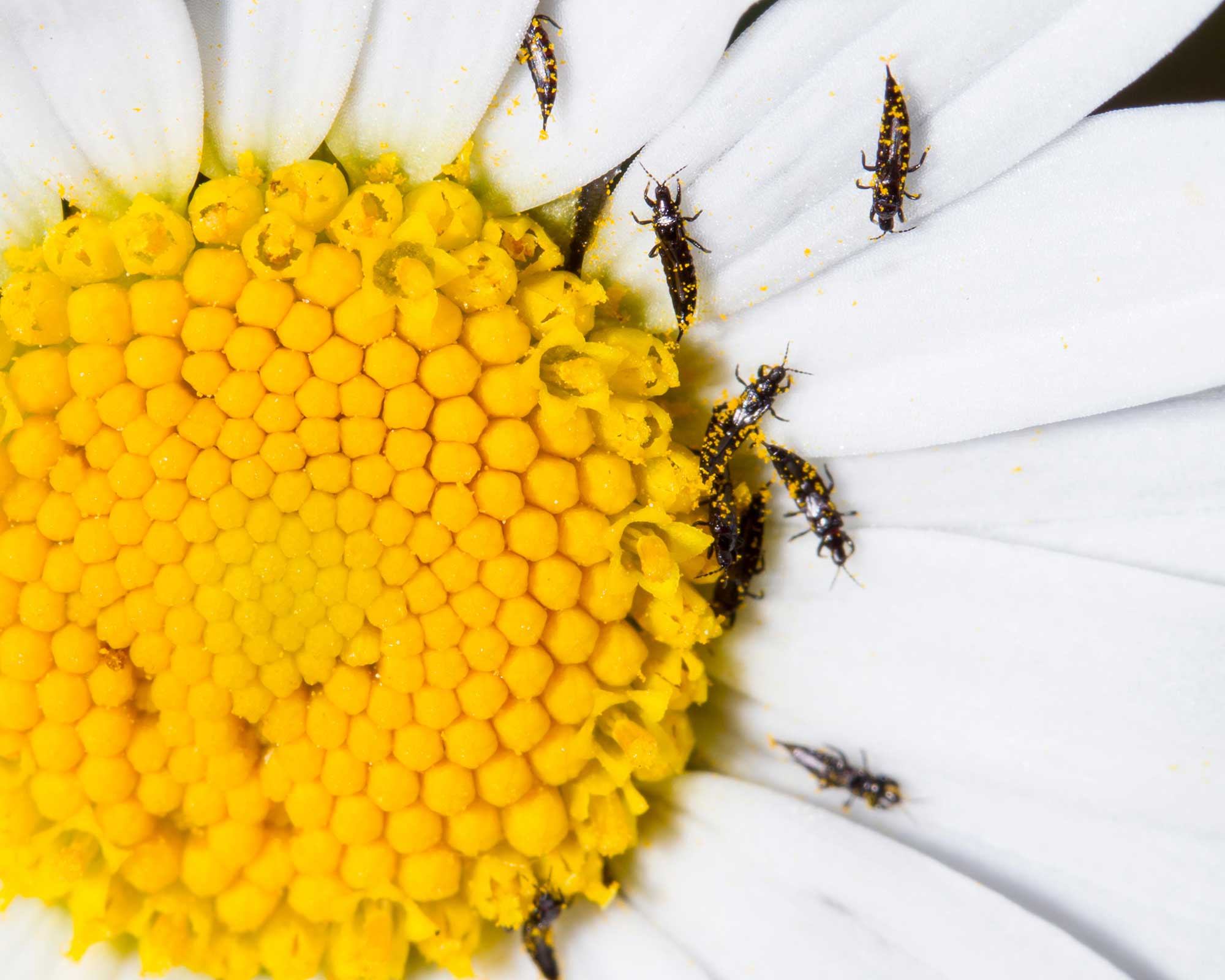
A cluster of thrips on a flower
Will thrips kill a plant?
'Although it's unlikely a thrips infestation will kill an established plant, they will cause serious damage to its leaves, and can kill smaller, more vulnerable plants,' says the team at Baby Bio®. So, if you spot them encroaching on your indoor garden ideas, greenhouse, or even your flowerbeds or containers, it's best to act fast.
'One of the first signs you may have a thrips problem is the discoloration of leaves, so keep an eye out for small marks and patches of pale-colored areas forming,' the team says.
'Other tell-tale signs are disfigured new leaves, brown spots, or dying leaves.'
If thrips feed on flower buds or at the tips of plant shoots, they can also cause distorted growth. As the RHS explains, petals can become marked by white flecks due to lost pigment, and buds can even be prevented from opening.
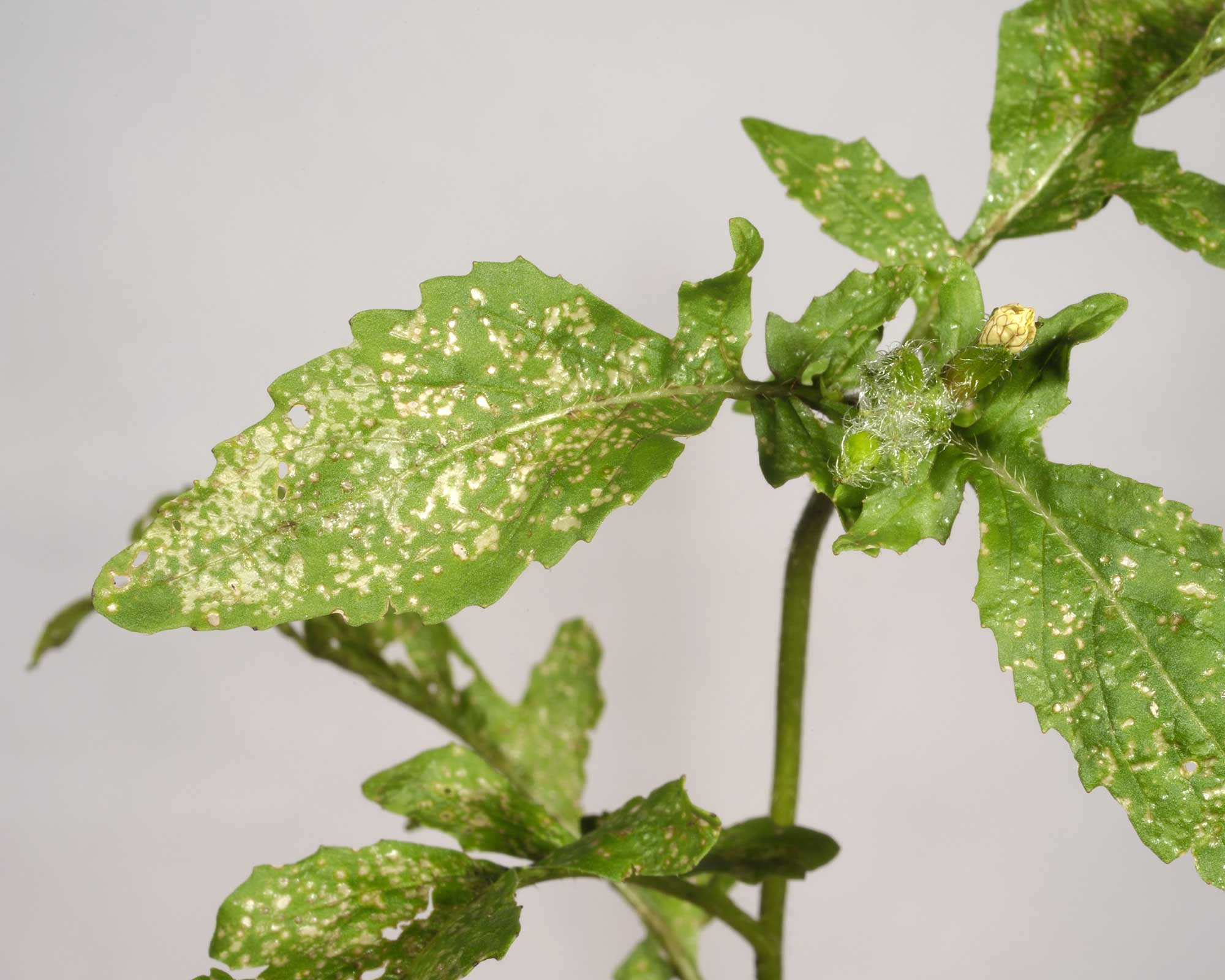
These leaves have been damaged by thrips
What do thrips look like?
Knowing how to get rid of thrips is useful, whether you have an active pest problem or not – but you will also need to know how to identify them.
Here's what to look out for:
- Although thrips can vary in color, they are otherwise similar in characteristics.
- Adult thrips have narrow bodies and are up to 2mm long – so really quite tiny.
- Adult thrips also have two pairs of wings, although younger thrips are wingless.
- Young thrips also tend to be paler than adults – a cream-yellow color instead of the usual yellowish-brown or blackish-brown, as the RHS explains.

The garden was always a big part of Holly's life growing up, as was the surrounding New Forest where she lived. Her appreciation for the great outdoors has only grown since then. She's been an allotment keeper, a professional gardener, and a botanical illustrator – plants are her passion.
